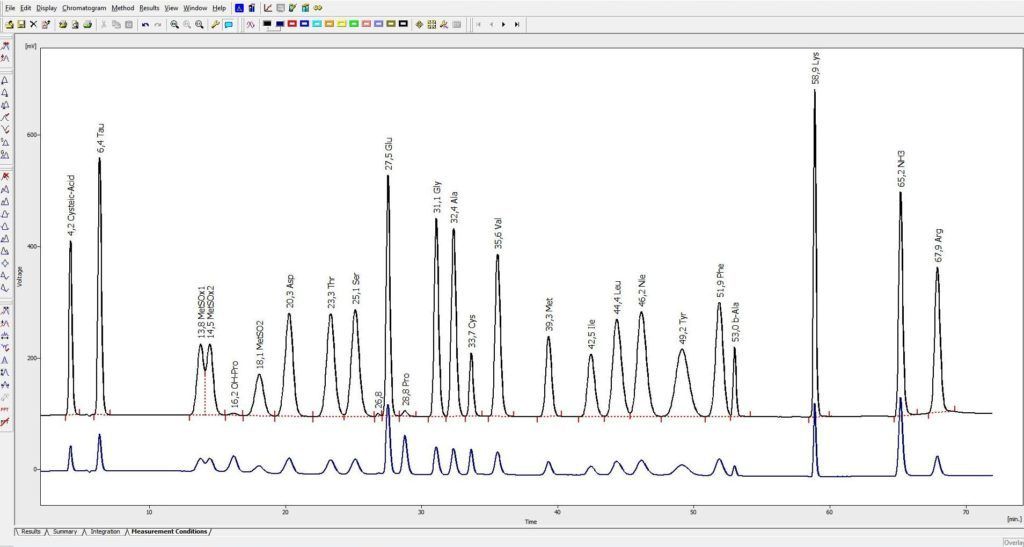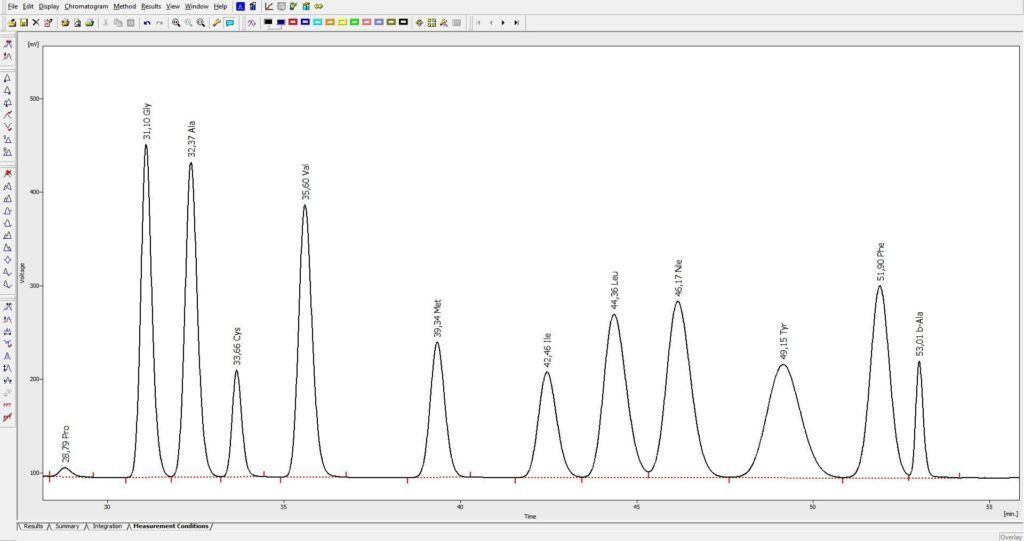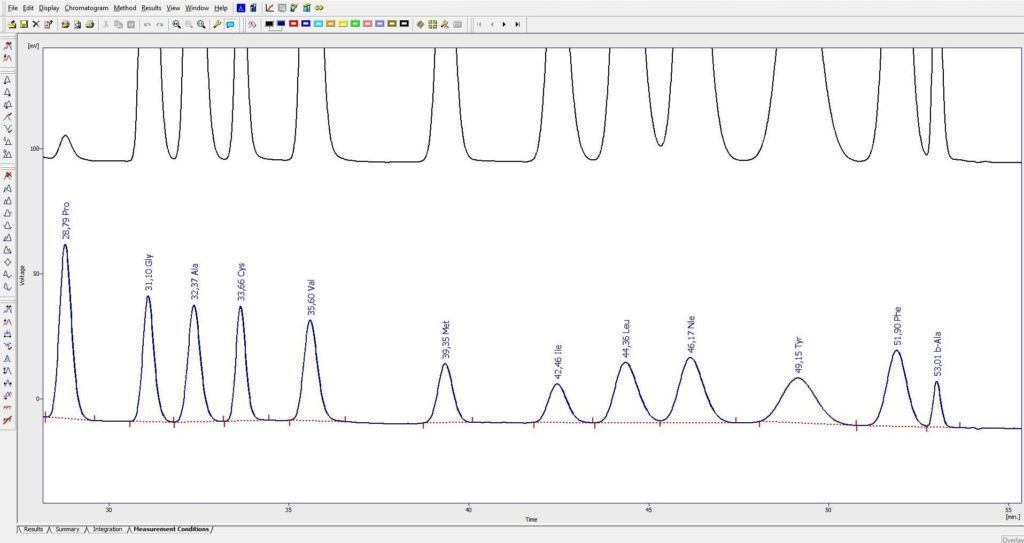An application for an amino acid analyzer is defined by a separation column, a set of buffers and the list of amino acids to be separated from each other as well as from any disturbing substances present in the samples that could or are likely to appear in the chromatogram. Standard applications are available for complete analysis of hydrolysates, oxidized feedstuff hydrolysates and physiological fluids along with a number of short programs when only some amino acids need to be determined.
Check the following pages to see some sample chromatograms:
The key parameters for achieving a good separation of the amino acids are – apart from the cation-exchange column itself – eluent pH, eluent molarity, the column temperature gradient and to some extend the eluent organic content. Apart from the possibility to use only step-gradients, as most of the earlier amino acid analyzers do, the S 433 buffer pumping system is based on quaternary gradient system allowing virtually unlimited mixing-conditions of any of the buffers with a precision of 0,1% and programming in 1% steps for each buffer. This enables the strategy of adapting the gradient towards the optimal pH and molarity for each part of the chromatogram as if there were even more buffers on the system as the often used number of four to six buffers on earlier amino acid analyzers. Nowadays, low-pressure quaternary gradient pumps are well accepted and commonplace in the HPLC-market and proving to have excellent results with regard to stability of retention times, reproducibility and accuracy. With the Sykam ready made buffers, columns and a complete series of pre-defined gradient-programs all usual applications for amino acid analysis are availabe as a “ready to run” package.
- The applications for Hydrolysates and Oxydized-Feedstuff Hydrolysates are based on a buffersystem consisting of 3 Sodium-buffers (i.e. Sodium as the cationic counter-ion) and the column regeneration solution based on Sodiumhydroxide. There is a choice of two columns. A column of 4.6x150mm and a column of 4.6x175mm filled with a cation-exchange resin with a bead-size of 7µm.
- The appications for Physiological Fluids are based on a buffersystem consisting of 3 Lithium-buffers (i.e. Lithium as the cationic counter-ion) and the column regeneration solution based on Lithiumhydroxide. As with the hydrolysate applications, there is a choice of two columns. A column of 4.6x150mm and a column of 4.6x175mm filled with a cation-exchange resin with a bead-size of 7µm.
Illustrated in the next three graphs:
- The absence of any buffer-steps on the 570nm channel as well as on the 440nm channel!
- No baseline drop after phenylalanine (not even on the 440nm channel as often oberved with other analyzers).
- Virtually no baseline rise around the area of the ammonium peak at the end of the chromatogram, illustrating the purity of the buffers and adequate capacity of the pre-column acting as an ammonium-trap.
- High resolution. Note the area between glycine and norleucine, where resolution is often limited with classical analyzers.
Apart from the chromatograms shown here below, these points are valid for hydrolysate as well as physiological fluid analysis!



The above graphs are 700×400 pixels. Zooming-in could reveal more detail on your monitor.